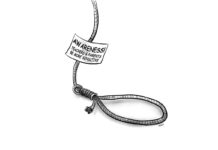
[av_one_full first min_height=” vertical_alignment=” space=” custom_margin=” margin=’0px’ padding=’0px’ border=” border_color=” radius=’0px’ background_color=” src=” background_position=’top left’ background_repeat=’no-repeat’ animation=”]
[av_heading heading=’EDITORIAL’ tag=’h3′ style=’blockquote modern-quote’ size=’30’ subheading_active=’subheading_below’ subheading_size=’15’ padding=’10’ color=” custom_font=”][/av_heading]
[av_image src=’http://www.panaynews.net/wp-content/uploads/2017/08/editorial-cartoon-for-aug22.jpg’ attachment=’114783′ attachment_size=’full’ align=’center’ styling=” hover=” link=” target=” caption=” font_size=” appearance=” overlay_opacity=’0.4′ overlay_color=’#000000′ overlay_text_color=’#ffffff’ animation=’no-animation’][/av_image]
[av_textblock size=’18’ font_color=” color=”]
PRESIDENT Duterte has acknowledged his failure to address the drug problem within his self-imposed deadline ranging from three to six months. Many have been killed, arrested or voluntarily surrendered. Yet the supply of shabu – the most popular illegal drug in the country – appears inexhaustible.
It is more alarming that the President even praised the bloody record of killings and gave a head’s up for state forces to continue, as if there is a quota. It is scarier to think of how many more lives will be lost up to his new deadline by 2022, taking into consideration his nonchalant statement that 32 killings per day is okay.
The problem has actually taken an international dimension. The United Nations Office on Drug and Crime (UNODC) identified the Philippines as a global shabu giant. That President Duterte has drawn China into his “shoot-to-kill” drug war with one simple question last year was an acknowledgement of the problem’s international dimension. He asked: “Why is it that most of the (Chinese) guys that come here do drugs, pati sa looban (ng kulungan)?”
As early as 2009, UNODC’s World Drug Report ranked the Philippines fifth in the world in methamphetamine seizures from 1998 to 2007, next only to China and the United States, countries with much larger populations, and Asian neighbors Thailand and Taiwan.
There’s no doubt that a more calibrated campaign is needed to solve the problem. The Philippines has become a hub for international drug syndicates. There were reports of “foreign investors” funding large-scale manufacture and operations of illegal drugs such as shabu.
“Drug investments” in the country should be pinpointed. We have to attack the drug problem at the source, which is the funding, manufacture, and distribution of illegal drugs. Unless we go straight to the source, we will never truly eradicate the drug menace in the country.
Drug trafficking is an organized crime on a massive scale. We will never make any substantial headway in the anti-drug campaign if the sources of these drugs are left unchecked, and even if our law enforcers will continue to make arrests or kill pushers every day.
[/av_textblock]
[/av_one_full]




